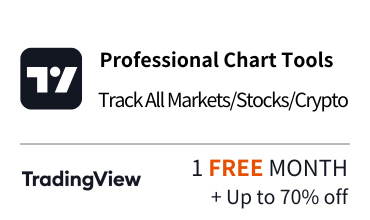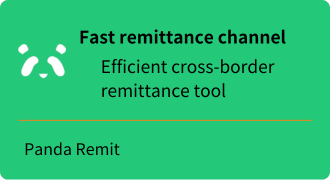Three Major Trading Markets: Which One Is Right for You?
[DISCLAIMER] This article is for educational and informational purposes only and does not constitute investment advice. Readers should consult with qualified financial professionals before making any investment decisions.
As a quantitative trading professional with over a decade of experience, I'm frequently asked: "Which market should I invest in—stocks, forex, or cryptocurrencies?" There's no standardized answer since each market has its unique characteristics and opportunities. Today, I'll provide a comprehensive overview of these three major markets to help you find the investment arena that best suits your needs.
Ⅰ. Why Understanding Different Markets Matters: Essential Pre-Investment Knowledge
When I first started investing, I made a common mistake: entering markets blindly without understanding their mechanisms. Just as you wouldn't join a poker game without knowing the rules, understanding market dynamics is crucial before investing.
Your market choice directly impacts:
- Capital security
- Expected returns
- Time commitment required
- Psychological stress levels
From my observations, over 80% of novice investors lose money because they choose markets unsuitable for their profile. Some cannot tolerate stock market fluctuations, others misunderstand forex leverage risks, while many retreat from cryptocurrency volatility.
Ⅱ. Stock Market: The Cradle of Steady Growth and Value Discovery
The stock market is my personal favorite investment venue, primarily because it offers clear value anchoring and long-term growth potential.
2.1. Core Characteristics: Sharing Company Ownership
Stocks essentially represent partial ownership in businesses. When you purchase Apple (AAPL) or Alibaba (BABA) shares, you become a small shareholder in these companies. This means:
- Company profitability directly influences share prices
- Long-term, stock prices tend to reflect actual business value
- You can share in company profits through dividends
One of my clients invested in US tech stocks last year and, despite short-term volatility, achieved a 12% return by selecting profitable companies.
2.2. Liquidity: Dominated by Large-Cap Stocks
Stock market liquidity varies considerably:
- Large-cap stocks (like Apple, Microsoft): Extremely high liquidity, tradable anytime
- Mid-cap stocks: Moderate liquidity, generally minimal slippage
- Small-cap stocks: Lower liquidity, potentially higher transaction costs
During the 2008 financial crisis, I witnessed some small-cap stocks plummet over 50% due to liquidity droughts—which is why I recommend beginners start with large-caps or ETFs.
2.3. Volatility: Variations Across Sectors and Market Capitalization
Stock market volatility shows significant differences:
- Blue-chip stocks in mature markets: Annual volatility typically 15%-25%
- Growth-oriented tech stocks: Annual volatility can reach 30%-60%
- Emerging market stocks: Annual volatility sometimes as high as 40%-70%
Case study: In early 2021, GameStop (GME) fluctuated over 1000% in a short period, while Coca-Cola (KO) varied less than 10% during the same timeframe. This illustrates how stock selection dramatically affects your investment experience.
2.4. Capital Requirements: Accessible Entry Point
A major advantage of stock markets:
- US stocks: No minimum investment requirement, starting from 1 share (typically $10-$500)
- Hong Kong stocks: Minimum one lot (usually several hundred to thousands of HKD)
- A-shares: Minimum one lot (typically several thousand RMB)
Even with just $1,000, you can begin building a diversified stock portfolio. This accessibility is why I typically recommend newcomers start their investment journey in the stock market.
Ⅲ. Forex Market: The World's Largest Trading Venue and the Double-Edged Sword of Leverage
The forex market exceeds $6 trillion in daily trading volume, making it the world's largest financial market. However, size doesn't necessarily equate to lower risk—often quite the opposite.
3.1. Core Characteristics: Currency Pairs and Leveraged Trading
The basic unit in forex trading is the "currency pair," such as Euro/US Dollar (EUR/USD) or US Dollar/Japanese Yen (USD/JPY). Key features include:
- Always trading in pairs: Buying one currency while selling another
- High leverage: Typical leverage ratios range from 50:1 to 400:1
- 24-hour trading: Operational round-the-clock Monday through Friday
In 2015, the Swiss National Bank suddenly removed the Swiss Franc's currency ceiling, causing EUR/CHF to plummet 30% within minutes. Some traders using high leverage saw their accounts liquidated overnight, some even falling into debt. This exemplifies forex market risk.
3.2. Liquidity: Unparalleled Market Depth
Major currency pairs offer extremely high liquidity:
- EUR/USD: Highest global trading volume, tightest spreads
- USD/JPY: Primary currency pair in Asian markets
- GBP/USD: More volatile but still abundantly liquid
This exceptional liquidity means you can execute large trades at market prices almost anytime without causing market disruption.
3.3. Volatility: Relatively Stable but Influenced by Macroeconomic Factors
Forex market volatility characteristics:
- Major currency pairs: Daily fluctuations typically within 0.5%-1% range
- Emerging market currencies: Greater volatility, sometimes reaching 3%-5%
- Major economic events: Can trigger intense short-term fluctuations
A forex trader friend likes to say: "Beneath the forex market's seemingly calm surface lie powerful undercurrents." For this reason, I advise all forex traders—regardless of experience level—to strictly control position sizes and leverage.
3.4. Capital Requirements: Low Entry but More Buffer Needed
Forex trading capital requirements:
- Minimum deposit: Typically $100-$500
- Recommended starting capital: At least $2,000-$5,000
- Professional trading: $10,000+ for greater safety margin
While theoretically you can begin forex trading with $100, I strongly recommend at least $2,000+ as buffer against leverage risks and market fluctuations.
Ⅳ. Cryptocurrency Market: The Digital Frontier Where Innovation and Risk Coexist
The cryptocurrency market is the youngest and most disruptive of the three. It offers both tremendous opportunities and substantial risks.
4.1. Core Characteristics: Decentralization and Extreme Volatility
Distinctive features of cryptocurrency markets:
- Decentralization: Not controlled by any single institution
- 24/7 trading: No market closures
- Extreme volatility: Prices can fluctuate dramatically in short periods
- Technology-driven: Value propositions often based on underlying technological innovation
In late 2017, Bitcoin surged from under $1,000 to nearly $20,000, then plummeted to around $3,000 in 2018. Such volatility is almost inconceivable in traditional financial markets.
4.2. Liquidity: Pronounced Stratification
Cryptocurrency market liquidity varies enormously:
- Bitcoin and Ethereum: Relatively good liquidity
- Mid-tier tokens: Moderate liquidity, potential slippage
- Small-cap tokens: Extremely poor liquidity, high transaction costs
In May 2021, a prominent investor sold a large Ethereum position, causing prices to drop over 30% within hours. This demonstrates that even mainstream cryptocurrency liquidity cannot compare with traditional markets.
4.3. Volatility: Unmatched Price Fluctuations
Cryptocurrencies exhibit the highest volatility among the three markets:
- Bitcoin: Annual volatility typically 60%-100%
- Ethereum: Annual volatility potentially reaching 100%-150%
- Small-cap tokens: Volatility may exceed 200%
In 2021, Dogecoin rose 800% in just days, then dropped 70%. Such volatility represents opportunity for some investors and nightmare for others.
4.4. Capital Requirements: Lowest Entry but Highest Risk
Cryptocurrency investment thresholds:
- Minimum investment: As little as a few dozen dollars
- Transaction fees: Relatively high, typically 0.1%-1%
- Additional considerations include wallet security and exchange selection
Despite low entry barriers, I consistently advise investors to only use capital they "can afford to lose entirely" when investing in cryptocurrencies.
Ⅴ. Comparison of Three Markets: Finding Your Investment Home
To help you compare more intuitively, I've created this concise comparison table:
| Feature | Stock Market | Forex Market | Cryptocurrency Market |
|---|---|---|---|
| Value Foundation | Corporate profitability | Economic fundamentals | Technology & consensus |
| Volatility | Medium | Low (amplified by leverage) | Extremely high |
| Liquidity | High for large-caps, low for small-caps | Extremely high for major pairs | Moderate for Bitcoin, poor for small coins |
| Trading Hours | Business hours on weekdays | 24 hours on weekdays | 24/7 continuous |
| Regulatory Oversight | Strict | Relatively strict | Loose or absent |
| Entry Threshold | Low to medium | Superficially low (buffer needed) | Very low |
| Suitable Investors | Long-term value investors | Technical analysis enthusiasts | High risk tolerance investors |
Ⅵ. How to Choose the Right Market? Four Key Considerations
When guiding novice investors, I typically recommend considering four aspects:
6.1. Risk Tolerance: Honest Self-Assessment
Ask yourself:
- Would a 10% investment loss keep you awake at night?
- Can you accept your asset value halving in the short term?
- Would you check your account frequently due to market fluctuations?
If you're highly risk-sensitive, start with blue-chip stocks or ETFs. If you can accept higher risk, consider forex or allocate moderately to cryptocurrencies.
6.2. Available Time: Trading or Investing?
Different markets require varying time commitments:
- Long-term stock investing: A few hours of research weekly
- Short-term forex trading: Several hours monitoring markets daily
- Cryptocurrencies: Continuous attention to technological and community developments
A friend who works as a full-time physician lacks time for frequent trading. He chose to dollar-cost average into stock ETFs and achieved an average annual return of 12% over eight years. Remember, investment success doesn't always correlate with time spent.
6.3. Professional Knowledge and Learning Curve
Each market requires specific knowledge:
- Stock market: Fundamental analysis, company research capabilities
- Forex market: Macroeconomic knowledge, technical analysis skills
- Cryptocurrency: Blockchain technology understanding, community dynamics awareness
Choose based on your background and interests. For instance, investors with IT backgrounds might more easily understand cryptocurrencies, while economics majors might have advantages in forex.
6.4. Investment Goals and Time Horizon
Clarify your target timeframe:
- Short-term (within 1 year): Higher risk but greater return potential
- Medium-term (1-5 years): Moderate risk-return balance
- Long-term (5+ years): Power of compound growth
Personally, I allocate long-term capital primarily to stocks, medium-term tactical funds to forex, and only small "exploratory capital" to cryptocurrencies. This allocation provides both stable returns and exposure to innovative opportunities.
Ⅶ. Best Entry Path for Beginners: A Progressive Investment Strategy
Based on my experience guiding hundreds of investment newcomers, I recommend this entry path:
- Start with stocks: Begin with large index ETFs (like SPY or QQQ) to establish investment habits
- Diversify risk: Gradually increase individual stock allocations, learning fundamental analysis
- Try forex: After becoming familiar with stocks, experiment with small-capital forex demo trading
- Cautiously explore crypto: Only consider small allocations to Bitcoin or Ethereum after establishing stability in the previous steps
A student who started from zero followed this path—investing only in index ETFs the first year, adding individual stocks the second year, and only trying small forex and cryptocurrency positions in the third year. After five years, his portfolio achieved a 15% annualized return, far exceeding most investors who tried to "skip grades."
Ⅷ. Common Misconceptions: Cognitive Traps in the Three Trading Markets
8.1. Misconception One: High Volatility Equals High Returns
Many newcomers are attracted by cryptocurrency success stories but overlook that high volatility means high risk. In fact, over the long term, the risk-adjusted returns of stock markets are often higher because they're supported by corporate profitability.
8.2. Misconception Two: Forex Market is "Stable and Safe"
Because major currency pairs don't fluctuate dramatically in price, many mistakenly believe forex trading carries low risk. In reality, leverage amplifies risk, making forex a "capital black hole" for many beginners.
8.3. Misconception Three: Market Selection is More Important Than Investment Strategy
Many people spend excessive time debating "which market to choose" while ignoring that investment success centers on discipline and systems. An investor following disciplined approaches in the stock market typically achieves better results than someone operating randomly in any market.
Ⅸ. Global Trading Time Zones: Your Next Step to Understanding
After grasping the basic characteristics of these three markets, the next important step is mastering global trading time zones. Activity levels across different markets vary tremendously by time zone, directly affecting trading strategies and execution timing.
In my next article, "Trading Time Zones: A Global Market Introduction," I'll analyze in detail:
- Opening hours of major global exchanges
- Market characteristics and opportunities in different time zones
- How to leverage time zone differences to optimize trading strategies
- Risks of trading during low-liquidity periods
Ⅹ. Conclusion: Market Selection is the Beginning of the Journey, Not the Destination
Understanding the characteristics of stock, forex, and cryptocurrency markets is just the first step toward investment success. The real key lies in finding markets and strategies that suit your personality, goals, and lifestyle.
My advice: Start with the stock market to establish investment foundations and discipline; as experience accumulates, gradually explore forex and cryptocurrencies. Whichever market you choose, maintain a commitment to learning and risk management, and don't let short-term fluctuations influence long-term decisions.
Remember, investing is a marathon, not a sprint. Choosing the right track is important, but more crucial is persevering toward the finish line.
Which market interests you most? Have you already started investing, or are you still deliberating? Feel free to share your thoughts and questions in the comments—I'll provide assistance wherever possible. Looking forward to continuing our conversation in the next article about global market time zones!







